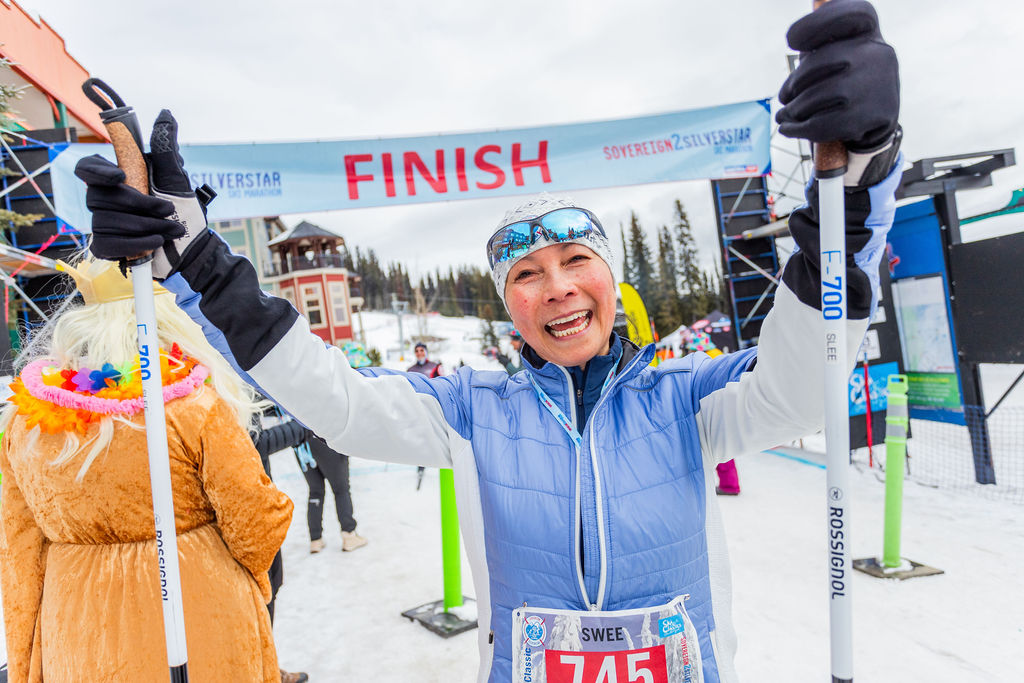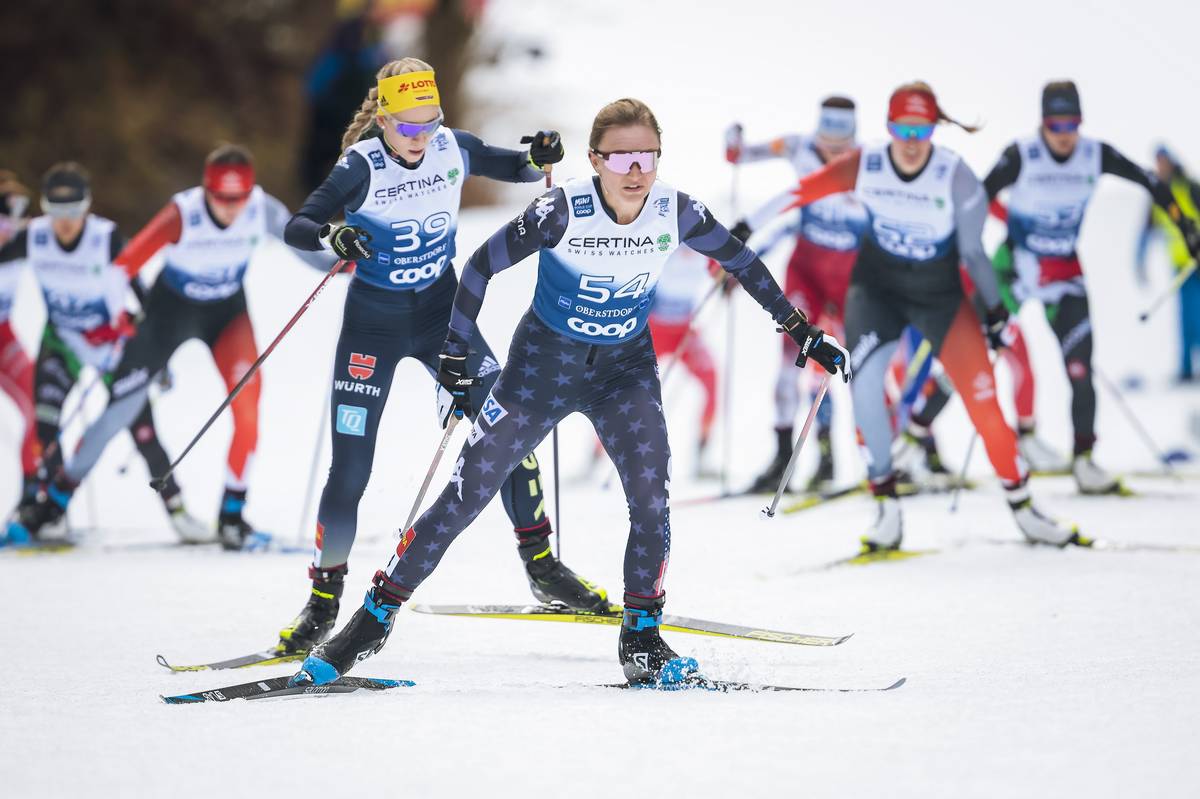This month, we’re doing a slightly different take on journal club. We’ll look at some new academic research into endurance training, then question how it can be applied to cross country skiing.
We’ve already discussed, on several occasions, how VO2Max is not necessarily a good predictor of success as a ski racer. But this is often one of the response variables for studies of training responses, along with time to exhaustion, power output, and lactate levels. So how easy is it to take research that focuses on raising these numbers, and apply it to a complex, dynamic sport such as skiing?
Before delving into this question further, let’s review a few papers that came out in the last month looking at different aspects on interval and intensity training. Here’s what researchers have recently been addressing.
Kristiansand Study: A team from the University of Agden in Kristiansand, Norway, wanted to know how training intensity and accumulated time at intensity across a training block affect an athlete’s adaptation to work hard.
Dr. Stephen Seiler and his colleagues designed four seven-week training plans: one of only easy distance training, and three with varying levels of intervals, ranging from 16-minute repeats at threshold to four-minute intervals at higher than race pace. The study subjects, masters cyclists, were assigned to a training plan, and physiological changes were tracked compared to their initial conditioning. Within each group of athletes, the intervals were assigned twice a week.
The study’s results, published in the Scandinavian Journal of Medicine and Science in Sports, showed that the greatest physiological gains came from the group of test subjects who did 8-minute intervals twice a week at about 90 % of their maximum heart rate. That group showed significant gains in VO2Max, power at peak VO2, and time to exhaustion when doing max tests at the end of the study.
In other words: it’s not all that useful to do threshold intervals that are too short, but submaximal effort is still incredibly valuable.
“Our findings seemingly contradict recent research concluding that ‘up to an intensity approzimating VO2Max, intensity determines the training response, not duration,’” the authors wrote. “… Intensity and work duration appear to be integrated, and not independent of each other as signaling components of the adaptive response to training.”
Stirling-Dublin Study: A group from the University of Stirling in Scotland and University College Dublin in Ireland looked at a slightly different question in regards to training block design – whether training sessions within a block should be similar or very different. Dr. Craig Neal and his colleagues published a study in the Journal of Applied Physiology asserting that having a large difference between intensities of training led to the biggest performance gains.
Like the Kristiansand group, this team used cyclists, and designed two six-week training blocks. One featured 80% of the work at low intensity and 20 % of the work at high intensity; the second was more broadly distributed, with none at high intensity but 43 % of the work at middle or threshold intensity. The 80/20 treatment was similar to the Kristiansand group’s high-intensity treatment: three times a week, the cyclists did 6 x 4 minute intervals. The other treatment consisted of continuous 60-minute stretches of mid-level exertion on the “workout” days.
Across most of the physiological indicators – lactate threshold, peak power output, and work capacity at 95 % – the 80/20 group showed significant, and in some cases very significant, improvement while the threshold group did not.
“The present study therefore confirms the hypothesis that a polarized training-intensity distribution model is an effective strategy in already well-trained endurance athletes,” the authors concluded. “[It] is recommended for trained cyclists wishing to maximally improve performance and physiological adaptation over a short-term training period, particularly if they are currently following a threshold training distribution model.”
* * *
Now. What do these studies actually mean? Because at face value, they have different conclusions: one supports high-intensity, four-minute intervals, the other, longer eight-minute threshold intervals. Should skiers switch their training to focus on one or the other? And if they did, how would they choose between them?
Why All These Studies?
The fact that two studies, assessing very similar questions, were published in the same month is not surprising – training is big business, not just for elite athletes with their sponsors and prize money, but for the booming recreational sports industry and weekend warriors always looking for the best way to train.
A Web of Knowledge search for “interval training” revealed more than 1,000 articles. Not all were about endurance training – some focused on other sports, like soccer or football – but you get the idea. There are tons of studies addressing these questions, and more coming out every year. Why should we take one of these recent papers as uprooting all this previous research?
First, let’s turn to the authors themselves. The Kristiansand team noted that their study was different from several other recent papers because many researchers prescribe the same amount of work across groups in a study, but have that work be at different intensity. They believe their approach, of varying from longer intervals at a slightly lower work rate to short intervals at absolute maximum, more realistically matches how athletes and coaches design their training.
The Scottish and Irish researchers, also asserted that their training design was more relevant to actual athletes than previous research, noting that an 80/20 distribution of low- and high-intensity training was common. They also invoked the idea that “zone 2” training was useless, and claimed to have demonstrated as much with the failure of their threshold training program.
In comparing the two studies, one major problem immediately jumps out: they don’t report the same types of data or use the same response variables. For instance, the Kristiansand team reported extensively on the characteristics of the work done in each training regimen, including data for percent of maximum heart rate and blood lactate levels during intervals for each group.
Those metrics were nowhere to be seen in the other paper, which prescribed the “zones” for the athletes to train in based on lactate threshold and lactate turning point, but gave no information about the actual measurements taken on athletes during the workouts. Instead, they reported power output and real heart rate. Because the zones were so large, it’s actually very relevant to wonder exactly where within them the athletes were training.
So it’s impossible to compare actual data from the two studies. And that might be one reason that so many studies are being done – it’s in many cases hard to directly compare protocols and results from one to another. It’s easy to argue that the specific way a study is conducted is new and adds some knowledge to what’s already out there.
What About Skiing?
But perhaps the bigger question is how these hyper-controlled studies interact with actual training plans for skiers. Because it’s all well and good to conclude that eight-minute intervals are the way to go, or that mid-level training is pointless, but what elite athlete only does one type of intervals, in the same formulation, week after week? No coach would recommend one of the training protocols tested above to their athlete.
(That said, master skiers, recreational skiers, and just plain busy people who can’t fit in too many workouts each month and are looking for quick increases in fitness might be interested to see these results – if you can only do one set of intervals per week and can’t make the brainspace to plan an elaborate, multi-workout rotation, one of these might be a good candidate.)
If it seems a little outrageous that more research isn’t being done on actual, realistic training plans, it’s important to remember who researchers are writing for. The goal of academic research is to answer a question and test a specific hypothesis, and to do so, scientists must control all other potentially confounding factors. They’re not writing for athletes or coaches, although they hope that the information they discover might be useful. Instead, they are writing for the academic community.
And in terms of applying tightly-controlled, simplified training studies to actual sports, skiers present one of the biggest challenges in the endurance world. Like other athletes, skiers periodize their training. Each week is different than the last, and a given week likely includes several sets of intervals, of different lengths and intensities. But while runners do most of their training on foot and cyclists do most of their training on bikes, in that same week a skier might rollerski, run, bike, hike, and bound with poles, adding yet another of complexity.
Imagine writing the methods section of an academic paper that describes a skier’s yearly training plan, and remember that the reviewers, editors, and readers are not familiar with the sport. There’s no “Journal of Cross Country Ski Science.”
All of this is not to say that academic research is useless to skiers – far from it. If all of these studies were stopped and discontinued for the future, we’d all suffer. By oversimplifying the training regimens they prescribe, scientists are hoping not only to learn what kind of intervals are best, but also why they might be best. If they can answer some underlying physiological question, then the new knowledge can be built into complex, real-life training plans.
So if you’re a real training and physiology geek, don’t stop reading about new research. Just remember that you’re never going to find a magic key to athletic greatness in a sports science journal – those kinds of studies don’t exist. Instead, look at the big picture, and try to find trends and underlying physiological explanations in the papers.
This Month in Journals is our occasional series surveying the world of sports science and trying to extract tidbits of research that might be of interest to the skiing public. Previous editions can be found here: January, December, October, and September.
Chelsea Little
Chelsea Little is FasterSkier's Editor-At-Large. A former racer at Ford Sayre, Dartmouth College and the Craftsbury Green Racing Project, she is a PhD candidate in aquatic ecology in the @Altermatt_lab at Eawag, the Swiss Federal Institute of Aquatic Science and Technology in Zurich, Switzerland. You can follow her on twitter @ChelskiLittle.




2 comments
slowerskier
February 28, 2013 at 11:05 am
Do you have other links for the cited studies? The links in the article require log-in for the Norwegian study and only the abstract for the other.
Chelsea Little
February 28, 2013 at 12:48 pm
Hi slowerskier –
Unfortunately not. If you log on from a university or other library computer (or use remote login), that page should take you directly to the full article, or at least you should be able to click “full text.” Without a subscription, though, it is not possible, and we can’t distribute PDF’s of material that is under copyright. I wish we could help you out more, but if you’re interested in reading journal articles, my suggestion is to find a library, as they typically have a subscription bundle that, depending on the journal, will allow you to access this content.
-Chelsea